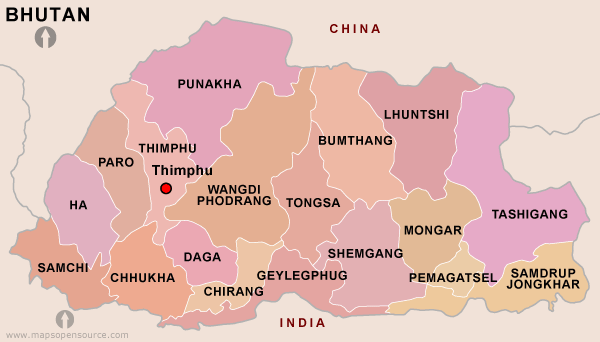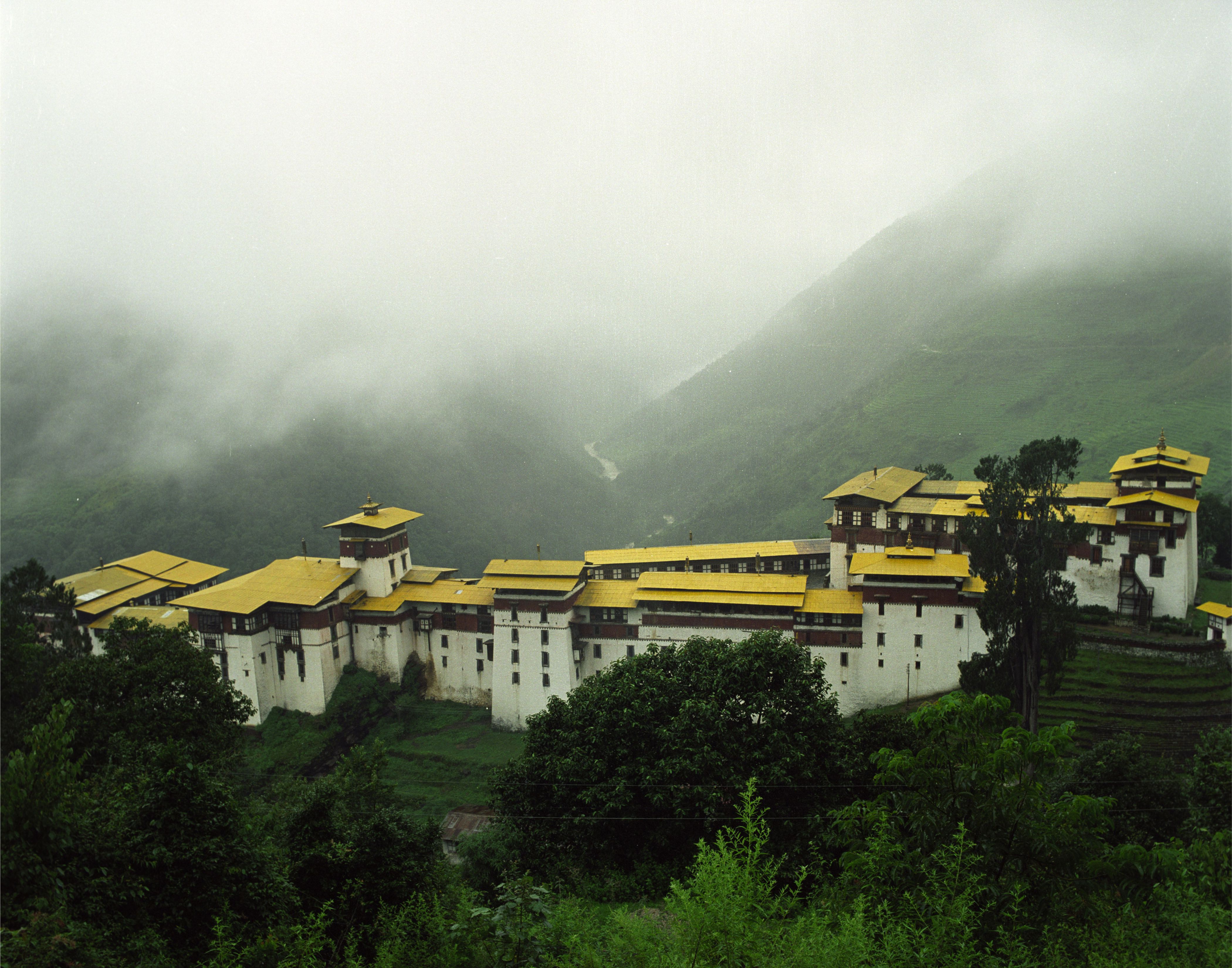|
Ugyen Dorji
Ugyen Dorji ( dz, ཨོ་རྒྱན་རྡོ་རྗེ་, , 1855–1916) was a member of the elite Dorji family and an influential Bhutanese politician. He served as the closest adviser to Ugyen Wangchuck, the hereditary 12th Penlop of Trongsa and later 1st Druk Gyalpo. Ugyen Dorji was instrumental in advising the Penlop to aid the British Empire in its expedition to Tibet in 1904 and fostering friendly relations with the British after the Bhutan War (1864–1865). Operating from Bhutan House in Kalimpong, India, Ugyen Dorji used his position to open Bhutan to the outside world, establish Bhutan's foreign relations, and operate a lucrative trading outlet. Family He was a son of ''Dasho'' Sharpa Puchung, '' Dzongpon'', and his wife, Thinley Pem, a lady from the Tsento in Paro. His sister was ''Ayi'' Thubten Wangmo. Ugyen Dorji's son Sonam Topgay Dorji was born in 1896. His descendants maintained and developed the political power of Ugyen Dorji, marrying into the ... [...More Info...] [...Related Items...] OR: [Wikipedia] [Google] [Baidu] |
Dzongpen
Dzongpen ( Dzongkha: རྗོང་དཔོན་; Wylie: ''rjong-dpon''; also spelled "Dzongpon," "Dzongpön," "Jongpen," "Jongpon," "Jongpön") is a Dzongkha term roughly translated as governor or dzong lord. Bhutanese dzongpens, prior to unification, controlled certain areas of the country, but now hold no administrative office. Rather, dzongpens are now entirely subservient to the House of Wangchuck. Traditionally, Bhutan comprised nine provinces: Trongsa, Paro, Punakha, Wangdue Phodrang, Daga (also Taka, Tarka, or Taga), Bumthang, Thimphu, Kurtoed (also Kurtoi, Kuru-tod), and Kurmaed (or Kurme, Kuru-mad). The Provinces of Kurtoed and Kurmaed were combined into one local administration, leaving the traditional number of governors at eight. While some lords ruled from dzongs (dzongpens), others held the title of penlop ( Dzongkha: དཔོན་སློབ་; Wylie: ''dpon-slob''; also "Ponlop"), a title also translated as "governor," though penlops tended to be m ... [...More Info...] [...Related Items...] OR: [Wikipedia] [Google] [Baidu] |
Thimphu
Thimphu (; dz, ཐིམ་ཕུག ) is the capital city, capital and largest city of Bhutan. It is situated in the western central part of Bhutan, and the surrounding valley is one of Bhutan's ''dzongkhags'', the Thimphu District. The ancient capital city of Punakha was replaced by Thimphu as capital in 1955, and in 1961 Thimphu was declared as the capital of the Kingdom of Bhutan by the 3rd Druk Gyalpo Jigme Dorji Wangchuck. The city extends in a north–south direction on the west bank of the valley formed by the Wang Chhu, which flows out into India as the Raidāk River. Thimphu is the List of capital cities by altitude, fifth highest capital in the world by altitude and ranges in altitude from to .Brown, p. 97Palin, p. 245 Unusually for a capital city, Thimphu does not have its own airport, instead relying on the Paro Airport (connected by road some away). Thimphu, as the political and Economy of Bhutan, economic center of Bhutan, has a dominant agriculture and livestoc ... [...More Info...] [...Related Items...] OR: [Wikipedia] [Google] [Baidu] |
Motithang
Motithang is a north-western suburb of Thimphu, Bhutan. The Chubachu River divides the district from Kawajangsa further north and Chubachu district lies to the east. Meaning "the meadow of pearls", the area only developed as a residential area in the 1980s, following the initial establishment of the Motithang Hotel in 1974, on the occasion of the coronation of Jigme Singye Wangchuck. At the time, the hotel was located in the middle of forest, separated from the city by farmland but today this area has grown up with houses and gardens. Aside from the Motithang Hotel, the district contains several notable state guest houses such as the Kungacholing and Lhundupling, Rapten Apartments and the Amankora Thimphu. It also contains the National Commission for Cultural Affairs, a UNICEF station and several grocery stores, including the Lhatshog supermarket. Schools include Motithang Higher Secondary School and Jigme Namgyal School. There is also a notable takin The takin (''Bud ... [...More Info...] [...Related Items...] OR: [Wikipedia] [Google] [Baidu] |
Treaty Of Punakha
The Treaty of Punakha was an agreement signed on 8 January 1910, at Punakha Dzong between the recently consolidated Kingdom of Bhutan and British India. The Treaty of Punakha is not a stand-alone document, but represents a modification of the Treaty of Sinchula of 1865, the prior working agreement between Bhutan and British India. As such, the Treaty of Punakha is an amendment whose text incorporates all other aspects of the Treaty of Sinchula by reference. Under the Treaty of Punakha, Britain guaranteed Bhutan's independence, granted Bhutanese Royal Government an increased stipend, and took control of Bhutanese foreign relations. Although this treaty began the practice of delegating Bhutanese foreign relations to another suzerain, the treaty also affirmed Bhutanese independence as one of the few Asian kingdoms never conquered by a regional or colonial power. Background and enactment For five months, between 1864 and 1865, Bhutan and British India engaged in the Duar War, whic ... [...More Info...] [...Related Items...] OR: [Wikipedia] [Google] [Baidu] |
Charles Alfred Bell
Sir Charles Alfred Bell (October 31, 1870 – March 8, 1945) was the British Political Officer for Bhutan, Sikkim and Tibet. He was known as "British India's ambassador to Tibet" before retiring and becoming a noted tibetologist. Biography He was educated at Winchester College, and then at New College, Oxford, after which he joined the Indian Civil Service in 1891. In 1908, he was appointed Political Officer in Sikkim. He soon became very influential in Sikkim#Government and politics, Sikkimese and Bhutanese politics, and in 1910 he met the 13th Dalai Lama, who had been forced into temporary exile by the Chinese. He got to know him quite well, and later wrote his biography (''Portrait of the Dalai Lama'', published in 1946). In 1913 he participated in the Simla Convention, a treaty between Great Britain, China and Tibet concerning the status of Tibet. Before the summit, he met in Gyantse with Paljor Dorje Shatra, the Tibetan representative to the British Raj at Darjeeling an ... [...More Info...] [...Related Items...] OR: [Wikipedia] [Google] [Baidu] |
Tibetologist
Tibetology () refers to the study of things related to Tibet, including its history, religion, language, culture, politics and the collection of Tibetan articles of historical, cultural and religious significance. The last may mean a collection of Tibetan statues, shrines, Buddhist icons and holy scripts, Thangka embroideries, paintings and tapestries, jewellery, masks and other objects of fine Tibetan art and craftsmanship. History *The Jesuit Antonio de Andrade (1580–1634) and a few others established a small mission and church in Tsaparang (1626), in the kingdom of Guge (Western Tibet) in the 17th century. When the kingdom was overrun by the king of Ladakh (1631), the mission was destroyed. *A century later another Jesuit, the Italian Ippolito Desideri (1684–1733) was sent to Tibet and received permission to stay in Lhasa where he spent 5 years (1716–1721) living in a Tibetan monastery, studying the language, the religion of the lamas and other Tibetan customs. He publish ... [...More Info...] [...Related Items...] OR: [Wikipedia] [Google] [Baidu] |
Lhotshampa
The Lhotshampa or Lhotsampa ( ne, ल्होत्साम्पा; ) people are a heterogeneous Bhutanese people of Nepalese descent. "Lhotshampa", which means "southern borderlanders" in Dzongkha, began to be used by the Bhutanese state in the second half of the twentieth century to refer to the population of Nepali origin in the south of the country. After being displaced as a result of the state-run ethnic cleansing and living in refugee camps in eastern parts of Nepal, starting in 2007, most of the Lhotshampas, or Bhutanese Refugees, were resettled to various countries, such as the United States, Canada, Australia, the United Kingdom, and other European countries. the number of Lhotshampa in Nepal is significantly lower than that in the United States and other countries where they have resettled. People of Nepalese origin started to settle in uninhabited areas of southern Bhutan in the 19th century. History The first small groups of Nepalese emigrated primarily fr ... [...More Info...] [...Related Items...] OR: [Wikipedia] [Google] [Baidu] |
Tibet
Tibet (; ''Böd''; ) is a region in East Asia, covering much of the Tibetan Plateau and spanning about . It is the traditional homeland of the Tibetan people. Also resident on the plateau are some other ethnic groups such as Monpa people, Monpa, Tamang people, Tamang, Qiang people, Qiang, Sherpa people, Sherpa and Lhoba peoples and now also considerable numbers of Han Chinese and Hui people, Hui settlers. Since Annexation of Tibet by the People's Republic of China, 1951, the entire plateau has been under the administration of the People's Republic of China, a major portion in the Tibet Autonomous Region, and other portions in the Qinghai and Sichuan provinces. Tibet is the highest region on Earth, with an average elevation of . Located in the Himalayas, the highest elevation in Tibet is Mount Everest, Earth's highest mountain, rising 8,848.86 m (29,032 ft) above sea level. The Tibetan Empire emerged in the 7th century. At its height in the 9th century, the Tibet ... [...More Info...] [...Related Items...] OR: [Wikipedia] [Google] [Baidu] |
Haa District
Haa District ( Dzongkha: ཧཱ་; Wylie: ''Haa''; alternative spellings include "Ha") is one of the 20 dzongkhag or districts comprising Bhutan. An alternative name for the district is "Hidden-Land Rice Valley." It the second least-populated dzongkhag in the country after Gasa.http://www.haa.gov.bt/downloads?Type=12&Sector=AlBhutan Census website The most-spoken language of the district is Dzongkha. The river Haa Chhu, originating at Jomolhari mountain, flows through the district. Mystical history of Haa The name Haa (pronounced "hah"), as well as the more ancient name ''Has'' ( Dzongkha: ཧས་; Wylie: ''Has''; pronounced "hay"), connotes esoteric hiddenness. Haa's major feature is the Haa Valley, a steep north-south valley with a narrow floor. The district is presided over by three mountains collectively referred as "Three Brothers" -- ''Jampelyang, Chana-Dorji, and Chenrezig.'' Black, White, and Haa Gonpa temples Local historians maintain that two important templ ... [...More Info...] [...Related Items...] OR: [Wikipedia] [Google] [Baidu] |
Penlop
Penlop ( Dzongkha: དཔོན་སློབ་; Wylie: ''dpon-slob''; also spelled Ponlop, Pönlop) is a Dzongkha term roughly translated as governor. Bhutanese penlops, prior to unification, controlled certain districts of the country, but now hold no administrative office. Rather, penlops are now entirely subservient to the House of Wangchuck. Traditionally, Bhutan comprised nine provinces: Trongsa, Paro, Punakha, Wangdue Phodrang, Daga (also Taka, Tarka, or Taga), Bumthang, Thimphu, Kurtoed (also Kurtoi, Kuru-tod), and Kurmaed (or Kurme, Kuru-mad). The Provinces of Kurtoed and Kurmaed were combined into one local administration, leaving the traditional number of governors at eight. While some lords were penlops, others held the title Dzongpen ( Dzongkha: རྗོང་དཔོན་; Wylie: ''rjong-dpon''; also "Jongpen," "Dzongpön"), a title also translated as "governor." Other historical titles, such as "Governor of Haa," were also awarded. Under the dual syste ... [...More Info...] [...Related Items...] OR: [Wikipedia] [Google] [Baidu] |




